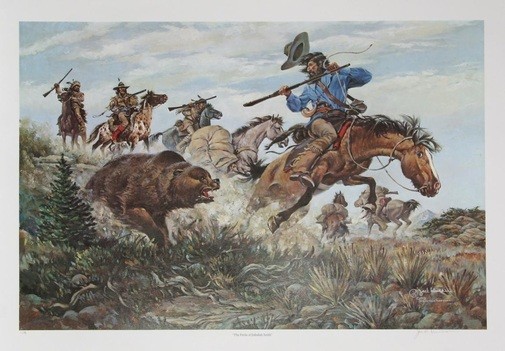Here are eight amazingly awesome survivalists from the past. You may find their experiences humbling.
John Wesley Powell (1834-1902) After losing his right arm at the Battle of Shiloh in the Civil War, Major Powell, at 35, strapped a wooden chair to a wooden boat, enlisted nine men and floated his way down the Grand Canyon, making the first ever-run through the canyon by a bunch of white guys and possibly by anyone. Powell went on to head the U.S. Geological Society, and he is buried in Arlington National Cemetery.
James Beckwourth (1798-1866) Born into slavery in Frederick County, Virginia, Jim Beckwourth’s mother was a slave and his father was an Englishman. Roughly 20 years later, Beckwourth received his freedom and hooked up with General William Ashely’s outfit, the Rocky Mountain Fur Company. Beckwourth’s time on the frontier is captured in the book The Life and Adventures of James P. Beckwourth, Mountaineer, Scout, and Pioneer, and Chief of the Crow Nation of Indians.
Marie Dorion (1786-1850) In January 1814, Dorian took the kids and a horse in search of her husband’s camp somewhere in Idaho. Upon arriving, she found he had been killed and only one man was alive. She loaded him on the horse, but he died soon thereafter. Then, upon arriving back at her home camp, she found everyone there had been slaughtered as well. She loaded up her boys and some food and started heading west out of hostile territory. For three months they crossed the snows of the Blue Mountains and eventually had to eat the horse. After surviving the winter in the mountains and walking some 250 miles, she and her boys came to the Columbia River where the Walla Walla tribe helped her recover.
Hugh Glass (1783-1833) As Hugh Glass crawled, dragged and limped some 200 miles from Fort Kiowa after being mauled by a grizzly and left for dead by his “companions,” I have to wonder if his fuel to live came from revenge or the off-chance that he would help Leonardo DiCaprio win his first Oscar. Unless you’ve been living a mountain man’s existence these past couple years, you’ve likely heard of Hugh Glass and his famous crawl.
Jedidiah Smith (1799-1831)
Smith and around a dozen men were meandering down the south fork of the Cheyenne River when a large grizzly burst from the shadows. It broke ribs, slashed Smith’s belly and chest eventually putting all of Smith’s head in his mouth. After ten days and many stiches later, Smith decided it was time to break camp and move on. He and his men continued on through the Mojave Desert and California.Stagecoach Mary Fields (1832-1914)
A former Tennessee slave who found her freedom after the Civil War, she got her name because she would always deliver (on time) the mail in and around the town of Cascade, regardless the weather or road conditions. She loved to drink at the bar alongside the men-folk and if one were to ever get wise, she’d just as soon break his nose than ask for an apology.John Colter (1774-1813) As a mountain man, one is predisposed to be fit, lest one dies. So when he was busted trapping by some Blackfeet Indians near the three forks of the Madison, Jefferson and Gallatin Rivers, he got to take the ultimate fitness test. He was stripped down and told to run, which he did. Warriors gave chase and he managed to escape by out-running all but one (he killed that warrior). He then jumped into one of the rivers and clung to a log jam with only his nose breeching the surface. His chasers gave up and he walked 200 miles east back to the trading fort he helped build.
Jeremiah “Liver-Eating” Johnston (1824-1900)
After enlisting in the Navy, he knocked the snot out of an officer and fled west once he got his shore leave back. Since he deserted, he changed his name to Johnston. He went on to kill dozens of Crow warriors. When the Blackfeet captured him for the Crow bounty, he chewed through his rawhide handcuffs, beat up a guard, cut off the guard’s leg and used it as trail mix on his long road to vengeance.
We might be able to appreciate life's simplicity by reverting back to the “old ways” – building things by hand, making items from scratch, and fending for ourselves – but the truth of the matter is that we have a choice. For these brave men and women, that harsh wilderness was their entire world.
For more background information about remarkable frontier survivalists such as these, check out Outdoor Life.
Featured Image via RO Gallery/Jack Hines

Randy Rhea